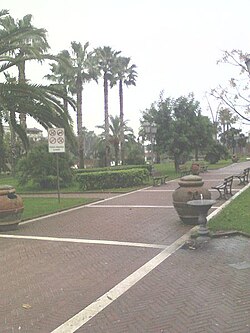San Valentino Torio
| San Valentino Torio | ||
|---|---|---|
| Comune | ||
| Comune di San Valentino Torio | ||
 |
||
|
||
| Location of San Valentino Torio in Italy | ||
| Coordinates: 40°47′N 14°36′E / 40.783°N 14.600°E | ||
| Country | Italy | |
| Region | Campania | |
| Province / Metropolitan city | Salerno (SA) | |
| Government | ||
| • Mayor | Michele Strianese | |
| Area | ||
| • Total | 9 km2 (3 sq mi) | |
| Elevation | 22 m (72 ft) | |
| Population (31 December 2010) | ||
| • Total | 10,313 | |
| • Density | 1,100/km2 (3,000/sq mi) | |
| Demonym(s) | Valentinesi | |
| Time zone | CET (UTC+1) | |
| • Summer (DST) | CEST (UTC+2) | |
| Postal code | 84010 | |
| Dialing code | 081 | |
| Patron saint | St. Valentine | |
| Saint day | 14 February | |
San Valentino Torio is a town and comune in the province of Salerno in the Campania region of south-west Italy. San Valentino Torio is situated in the northern part of the province, not far from Mount Vesuvius, in the Sarno river valley.
San Valentino Torio occupies a predominantly agricultural area with cultivation of the typical vegetables of the region, such as the San Marzano tomato.
The first traces of human presence in the southern Campanian plain date from the 9th–6th centuries BC, including a necropolis with 1400 sepultures, attributed to the Sarrastri tribe. The territory was invaded by the Samnites in 421 BC.
The earliest mention of San Valentino (as Balentino) is from an 868 AD document, preserved in the Trinità della Cava abbey. Its territory was held by the Del Balzo and Capece Minutolo families until the abolition of feudalism in 1806. It assumed the current denomination after the unification of Italy, in 1861.
...
Wikipedia


